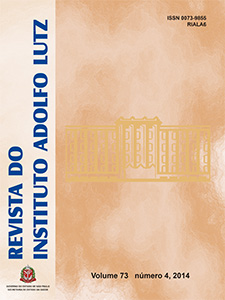Abstract
The Brazilian Health Surveillance Agency settles the regulation to the nutritional characteristics labeling and on the mandatory article in all of the packed products by means of the Resolution nº 360. The asserted contents declared in the label should not exceed < 20 % or > 20 % of the actual value. This study evaluated the physic-chemical composition of cakes for children,and these data were compared with the nutritional information on the label and their adequacy to the Brazilian regulation was investigated. Cake samples of 13 different flavors and from three brands (A, B and C) were analyzed. Humidity, ashes and sodium were determined following the methods established at Adolfo Lutz Institute. The lipids, proteins and fibers determinations were performed following the Association of Official Analytical Chemists methodology. Carbohydrates contents was obtained by calculating the difference. Of the analyzed samples, none of them complied with the legislation in all of the nutrients. The brand B and the fiber and sodium nutrients were the mostly noncompliant findings. Concerning the fiber and sodium contents, they were usually smaller and greater, respectively, than those values reported in the labels.References
1. Câmara MCC, Marinho CLC, Guilam MC, Braga AMCB. A produção acadêmica sobre a rotulagem de alimentos no Brasil. Rev Panam Saude Publica.2008;23(1):52-8.
2. Agência Nacional de Vigilância Sanitária. Resolução – ANVISA. Resolução da Diretoria Colegiada - RDC nº 360 de 23 de dezembro de 2003. Regulamento Técnico Sobre Rotulagem Nutricional de Alimentos. Diário Oficial da União República Federativa do Brasil, Brasília, DF, 2003.
3. Brasil. Ministério da Justiça. Código de Defesa do Consumidor (CDC). Lei n° 8 078/90 de 11 de setembro de 1990. Acessado em 21 jul. 2014. Disponível em: [http://www.planalto.gov.br/ccivil_03/leis/l8078.htm]
4. Leal VS, Lira PIC, Oliveira JS, Menezes RCE, Sequeira LAS, Neto MAA, et. al. Excesso de peso em crianças e adolescentes no Estado de Pernambuco, Brasil: prevalência e determinantes. Cad Saúde Pública.2012; 28(6):1175-82.
5. Instituto Adolfo Lutz (São Paulo - Brasil). Métodos físico-químicos para análise de alimentos: normas analíticas do Instituto Adolfo Lutz. 4ª ed. [1ª ed. digital]. São Paulo (SP): Instituto Adolfo Lutz; 2008.
6. Food and Agriculture Organization – FAO. Organização Mundial de Saúde - OMS. Necessidades de energia e de proteínas. Informe de um Comitê Especial Misto FAO/OMS. Roma, 1973, 138p.
7. Association of Official Analytical Chemists. Official methods of analysis of the Association of Official Analytical Chemists (method 920.39,C). Arlington: AOAC, c. 33. p. 10-2, 1995.
8. Philippi ST, Rigo N, Lorenzano C. Estudo comparativo entre tabelas de composição química de alimentos para avaliação de dietas. Rev Nutr.1995; 8(2):200-13.
9. Rodrigues HF, Silva LFM, Ferreira KS, Nogueira, FS. Avaliação de rotulagem nutricional composição centesimal e teores de sódio e potássio em batatas-palha. Rev Inst Adolfo Lutz. 2010; 69(3):423-7.
10. Mello AV, Cassimiro, TAS, Pospischek VS, Villarim WLF, Pereira IRO, Abreu ES. Avaliação da composição centesimal e da rotulagem de barras de cereais. E-Scientia. 2012; 5(2): 41-8.
11. Silva AM, Dutra MBL. Rotulagem de preparados instantâneos tipo “sopão”. Rev Alim Nutr.2012; 23(1):51-4.
12. Sauerbronn ALA. Análise laboratorial da composição de alimentos processados como contribuição ao estudo da rotulagem nutricional obrigatória de alimentos e bebidas embalados no Brasil [dissertação de mestrado]. Rio de Janeiro (RJ): Fundação Oswaldo Cruz, 2003.
13. Instituto Brasileiro de Defesa do Consumidor. IDEC. Revista do IDEC. Julho de 2014. Acesso em 21jul. 2014. Disponível em: [http://www.idec.org.br/uploads/revistas_materias/pdfs/189-alimentos1.pdf ]
14. World Health Organization - WHO. Guideline: Sodium intake for adults and children. Geneva; 2012.
15. Conselho Federal de Nutricionistas - CFN. Junho de 2014. Acessado em 17 ago. 2014. Disponível em: [http://www.cfn.org.br/eficiente/sites/cfn/ptbr/site.php?secao=noticias&pub=1944.

This work is licensed under a Creative Commons Attribution 4.0 International License.
Copyright (c) 2015 Instituto Adolfo Lutz Journal
